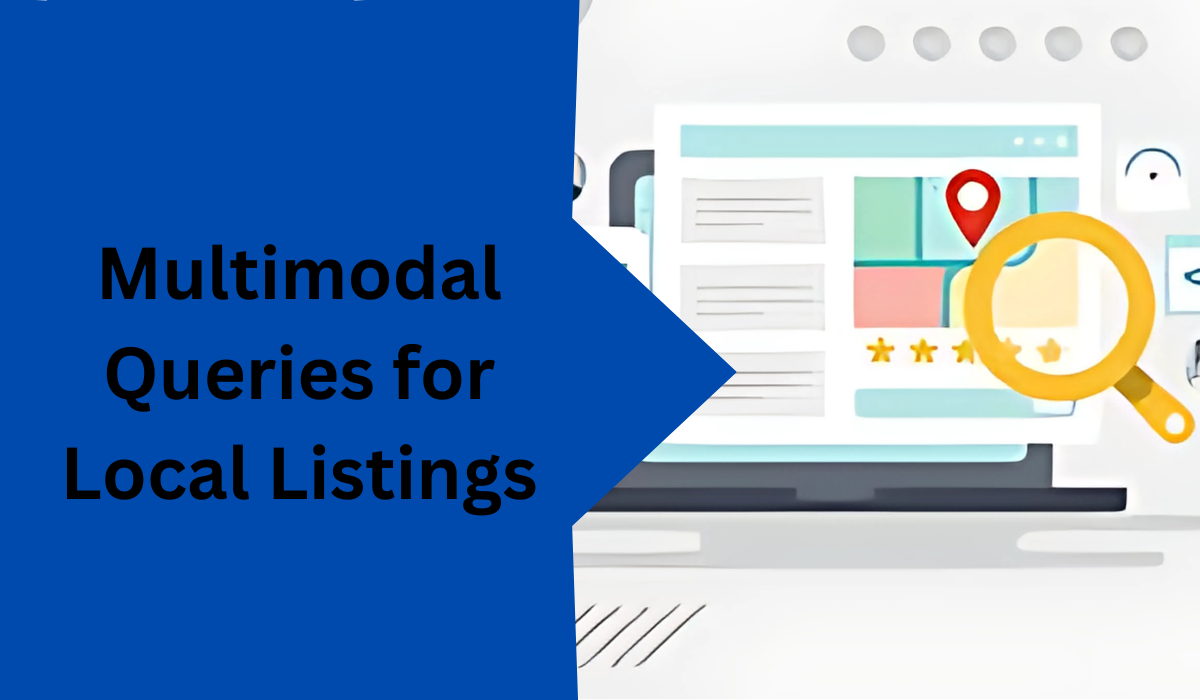
In today’s fast-evolving digital landscape, how people search for local businesses is changing. Gone are the days when typing a few words into Google was the only way to find a nearby café or plumber. Enter multimodal queries for local listings—a revolutionary approach that blends text, voice, images, and even location data to deliver faster, more accurate results. If you’re a small business owner or a marketer, understanding multimodal queries could be your ticket to standing out in local search results. Let’s dive into what they are, why they matter, and how you can optimize for them.
What Are Multimodal Queries?
Multimodal Queries for Local Listings refer to searches that combine multiple input types—text, voice, visuals, or geolocation—to find information. Imagine someone saying, “Hey Siri, find a pizza place near me with outdoor seating,” while their phone simultaneously uses GPS to pinpoint their location. Or picture a user snapping a photo of a storefront and asking Google Lens, “What’s this shop’s rating?” These are multimodal queries in action.
Unlike traditional searches, which rely solely on typed keywords, Multimodal Queries for Local Listings tap into the power of AI and machine learning to interpret diverse data points. For local listings, this means search engines like Google can deliver hyper-relevant results based on a user’s intent, context, and preferences.
Why Multimodal Queries Matter for Local Listings
Local businesses thrive on visibility, and Multimodal Queries for Local Listings are reshaping how customers discover them. Here’s why they’re a game-changer:
- Enhanced User Experience: Customers want quick, precise answers. Multimodal searches cut through the noise by combining inputs like voice and location, making it easier for users to find what they need.
- Rise of Voice Search: With smart speakers and mobile assistants on the rise, more people are using voice commands to find local services—think “best barber near me” or “coffee shops open now.”
- Visual Search Growth: Tools like Google Lens allow users to search with images, meaning your business’s signage, products, or storefront could trigger a local listing result.
- Competitive Edge: Early adopters who optimize for Multimodal Queries for Local Listings can outrank competitors stuck in the text-only mindset.
For example, a bakery that optimizes its local listing for voice and visual search might pop up when someone asks, “Where’s the nearest place to buy cupcakes?” while holding up a photo of a dessert. That’s the power of multimodal queries.
How to Optimize Local Listings for Multimodal Queries
Even with a low domain authority, you can compete for the top spot by creating a multimodal-friendly strategy. Here’s how:
1. Nail Your Google Business Profile
Your Google Business Profile (GBP) is the backbone of local search. To rank for multimodal queries:
- Fill out every field: address, hours, phone number, and categories.
- Use descriptive keywords like “local coffee shop” or “family-friendly restaurant” in your business description.
- Add high-quality photos of your storefront, products, or services (even if they’re not in this blog, they’re critical for visual search).
2. Target Voice Search Keywords
Voice queries tend to be conversational and location-specific. Optimize your website and GBP for long-tail phrases like:
- “Where can I find a pet store near me?”
- “What’s the best Italian restaurant in [city]?” Incorporate these naturally into your content, headings, and meta descriptions.
3. Leverage Structured Data
Structured data (schema markup) helps search engines understand your business. Add LocalBusiness schema to your site with details like:
- Business name
- Address
- Phone number
- Opening hours This boosts your chances of appearing in multimodal search results, especially for voice and map-based queries.
4. Focus on Mobile Optimization
Most multimodal queries happen on mobile devices. Ensure your website is fast, responsive, and easy to navigate. A slow site can tank your rankings, no matter how well you optimize.
5. Encourage Reviews with Keywords
Customer reviews influence local rankings. Ask satisfied clients to mention specific services or locations in their feedback, like “great pizza in downtown [city].” This aligns with natural multimodal search patterns.
6. Be Location-Specific
Multimodal queries often include “near me” or city names. Create location pages on your site (e.g., “Plumber in [City]”) and sprinkle these terms throughout your content to match user intent.
Challenges of Multimodal Queries for Small Businesses
While the benefits are clear, there are hurdles to overcome:
- Tech Savvy Required: Implementing schema markup or optimizing for voice search might feel daunting if you’re not a tech expert.
- Competition: Larger businesses with higher domain authority may dominate early multimodal results.
- Consistency: Your business info must be identical across all platforms (website, GBP, Yelp) to avoid confusing search engines.
The good news? With a low DA of 2, quality content and smart optimization can still push you ahead. Focus on niche, hyper-local keywords tied to multimodal queries, and you’ll build traction over time.
The Future of Local Search Is Multimodal
As AI continues to evolve, multimodal queries will only grow in importance. By 2030, experts predict that over 50% of searches will involve multiple input types. For local listings, this shift is already underway—voice assistants, visual tools, and geolocation are becoming the norm.
So, how do you stay ahead? Start optimizing today. Update your local listings, embrace conversational keywords, and make your business discoverable across text, voice, and visual searches. Even with a domain authority of 2, consistent effort and a user-focused approach can land you on Google’s first page.
Conclusion
At Digitalxperts, Multimodal queries for local listings aren’t just a trend—they’re the future of how customers find businesses like yours. By blending traditional SEO with voice, visual, and location-based strategies, you can unlock new opportunities to connect with your audience. Ready to rank higher and reach more local customers? Start tweaking your online presence now.

Leave a Comment